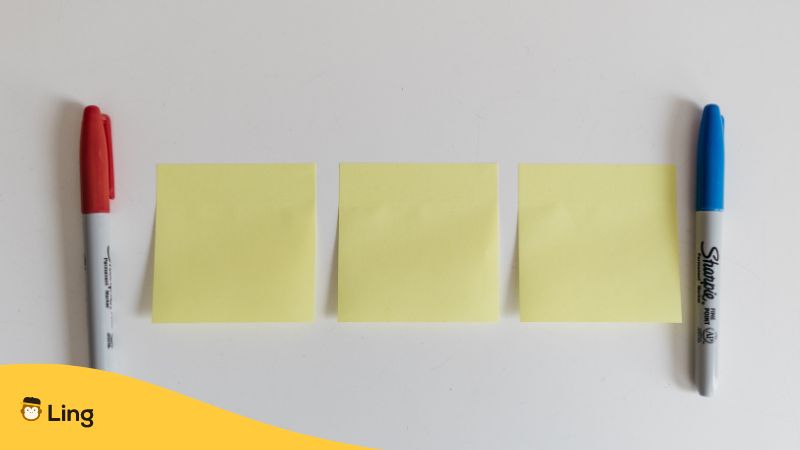Conjunctions are the glue that holds a language together, enabling us to link words, phrases, and ideas seamlessly. When it comes to the Lithuanian language understanding its conjunctions is essential for effective communication.
In this guide, we’ll dive into the world of Lithuanian conjunctions, breaking down their meanings and usage to help you navigate the linguistic landscape with confidence. Let’s focus on learning Lithuanian with these tricky conjunctions.
Lithuanian Conjunctions And Their English Counterparts
| English | Lithuanian |
|---|---|
| And | Ir |
| Or | Arba |
| But | Bet |
| Therefore | Todėl |
| Although | Nors |
| That | Kad |
| If | Jei |
| While | Kol |
1. And – Ir
“Ir” is the Lithuanian equivalent of the English conjunction “and.” It serves to connect words, phrases, or clauses that are related in meaning, indicating a continuation or addition of information.
Example: “Aš mėgstu skaityti ir rašyti.” (I like to read and write.)
2. Or – Arba
“Arba” functions as “or” in English, offering an alternative or choice between two options.
Example: “Tu gali pasirinkti arbatą ar kavą.” (You can choose tea or coffee.)
3. But – Bet
Similar to its English counterpart “but,” “bet” introduces a contrast or opposition between ideas.
Example: “Jis moka vairuoti, bet bijo skristi lėktuvu.” (He can drive, but he’s afraid of flying.)

4. Therefore – Todėl
“Todėl” corresponds to “therefore” in English, indicating a cause-and-effect relationship between two clauses.
Example: “Aš pasirinkau sportuoti, todėl jaučiuosi geriau.” (I chose to exercise; therefore, I feel better.)
5. Although – Nors
“Nors” serves as “although” in English. It introduces a concessive clause, highlighting a contradiction between ideas.
Example: “Nors lietus, vis tiek išeisime pasivaikščioti.” (Although it’s raining, we’ll still go for a walk.)
6. That – Kad
The conjunction “kad” is akin to “that” in English. It’s used to introduce subordinate clauses and is commonly found in reported speech.
Example: “Ji sakė, kad ateis vėliau.” (She said that she will come later.)

7. If – Jei
“Jei” functions as “if” in English, introducing conditional clauses that express a hypothetical situation.
Example: “Jei aš laisvas, aš susitiksime rytoj.” (If I’m free, we’ll meet tomorrow.)
8. While – Kol
“Kol” is the Lithuanian counterpart of “while” in English. It’s used to describe simultaneous actions or events.
Example: “Aš gaminu vakarienę, kol tu dirbi.” (I’m cooking dinner while you’re working.)
Check out Lithuanian transition words and Lithuanian adverbs to learn more about Lithuanian grammar basics.

5 Fun Facts to Enhance Your Understanding Of Lithuanian Conjunctions
Let us now deep dive into the need for having conjunctions as a Lithuanian grammar concept.
#1 Conjunctions As Bridge Builders
Think of conjunctions as bridges in language. Just as a bridge connects two pieces of land, conjunctions link words, phrases, or clauses in a sentence. Imagine “ir” as the bridge that seamlessly joins words together, making your sentence flow like a serene river.
#2 Supercharged “Ir”
“Ir” might seem simple, but it has a superpower in Lithuanian. Not only does it mean “and,” but it also works magic in creating compound verbs. Combine “ir” with action words, and you’ve got yourself a dynamic verb that packs a punch. For instance, “kalbėti ir šypsotis” (to talk and smile) adds extra flair to your expressions.
#3 “Bet” Isn’t Just “But”
While “bet” is often likened to “but,” it’s a chameleon in Lithuanian sentences. It can also imply results or consequences, showing that Lithuanian sentences can be as dynamic as a Rubik’s Cube. Try using “bet” to uncover new dimensions in your sentences, like revealing hidden colors on a Rubik’s Cube.
#4 “Kad” And Subtle Flexibility
“Kad” might appear straightforward, introducing subordinate clauses. But did you know that in casual conversation, it can sometimes be left out? It’s like having the option to skip the small talk and dive straight into the heart of the conversation. Test your skills by experimenting with “kad”-less sentences while maintaining clarity.
#5 “Nors” For Contradictions
Think of “nors” as a language acrobat, expertly balancing contradictions. While “although” is its English counterpart, “nors” can also introduce unexpected connections in Lithuanian. Like a trapeze artist defying gravity, “nors” lets you juggle contradictory ideas while maintaining linguistic harmony.

Exploring 2 Nuances of Lithuanian Conjunctions
While the basic meanings of Lithuanian conjunctions align with their English counterparts, delving deeper reveals the language’s intricate nuances. For instance, as we read above, “ir” not only links words but also has a significant role in forming Lithuanian compound verbs. For instance, “skristi ir šokti” (to fly and dance) showcases how “ir” contributes to the formation of many actions. This unique feature of Lithuanian allows for efficient expression of complex actions within a single verb structure.
The conjunction “bet” holds a special place in Lithuanian communication due to its subtle variations in usage. Unlike the English “but,” “bet” can sometimes indicate a result or consequence rather than a contrast. For instance, the sentence: “Aš perskaičiau knygą, bet pasijutau išmintingesnis” (I read the book, and I felt wiser) demonstrates how “bet” can connect ideas to convey a cause-and-effect relationship, going beyond mere opposition.
To Conclude
In the realm of language learning, understanding conjunctions is akin to wielding a key that unlocks doors to effective communication. Lithuanian conjunctions offer more than just syntax; they provide insights into the culture and mindset of its speakers! From the compact power of “ir” to the intricate variations of “bet,” each conjunction brings its own dimension.
As you navigate the world of Lithuanian conjunctions, you’re not just mastering words; you’re immersing yourself in a captivating linguistic journey that leads to fluency and cultural understanding. So, embrace these connectors, experiment with their placement, and watch your Lithuanian skills flourish.
Learn Lithuanian With Ling
Want more resources to help you learn Lithuanian? Download the language-learning Ling today from the App Store and Play Store. It is a highly researched app meant for a fun and personalized language-learning experience. Aside from Lithuanian, there are over 60+ foreign languages to learn on Ling. Download it today!!































































